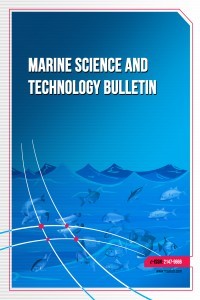
Marine Science and Technology Bulletin
Yazarlar: ["Mine KÖKTÜRK", "Aybek YİĞİT", "Ekrem SULUKAN"]
Konular:-
DOI:10.33714/masteb.1220668
Anahtar Kelimeler:Zebrafish,Iron oxide nanoparticle,Anxiety,Malformation,Nanotoxicology
Özet: The synthesis of nanoparticles and the usage areas of these nanoparticles show a rapid increase. In addition to the beneficial use of nanoparticles, their toxic effects cannot be ignored. In our study, iron oxide nanoparticle (Fe@AV NPs) (mean size: 20.852 nm) was synthesized from Aloe vera plant and the developmental toxicity of zebrafish was investigated. Zebrafish embryo-larvae were treated with different concentrations of Fe@AV NPs (1, 10, and 50 mg/L) starting at 4 hours after fertilization and continuing until 96 hours, and different developmental parameters (such as survival rate, hatchability rates, malformations, and behavior) were examined. In our study, it was determined that Fe@AV NPs caused developmental toxicity in zebrafish embryos depending on the dose increase. More than 60% died at 96 hours, especially in the highest (50 mg/L) application group. It was observed that Fe@AV NPs decreased and delayed the success of exiting the chorion depending on the dose increase, and caused various morphological abnormalities (like pericardial edema, tail deformation, and scoliosis) in all application groups except the lowest application group (1 mg/L). While 10 mg/L Fe@AV NPs caused sleep-like behaviors during the daytime by decreasing the daytime motility of the larvae, it caused hyperactivity by increasing their nocturnal motility. The results of thigmotaxis, which is an anxiety parameter, were found to increase anxiety at 10 mg/L Fe@AV NPs exposure.Our findings showed that Fe@AV NPs synthesized from Aloe vera plant have in vivo toxicity and their use at concentrations lower than 1 mg/L can be safe in environmental and medical applications.